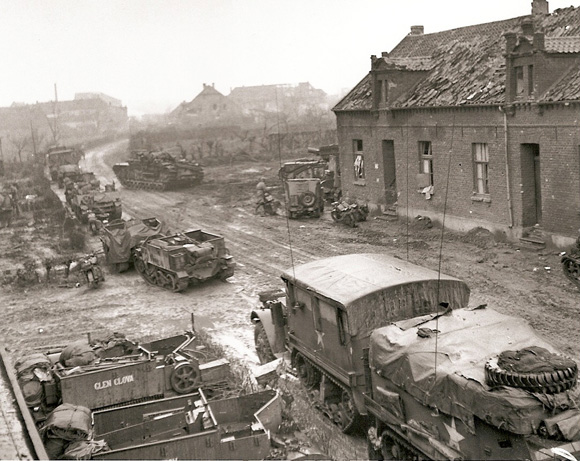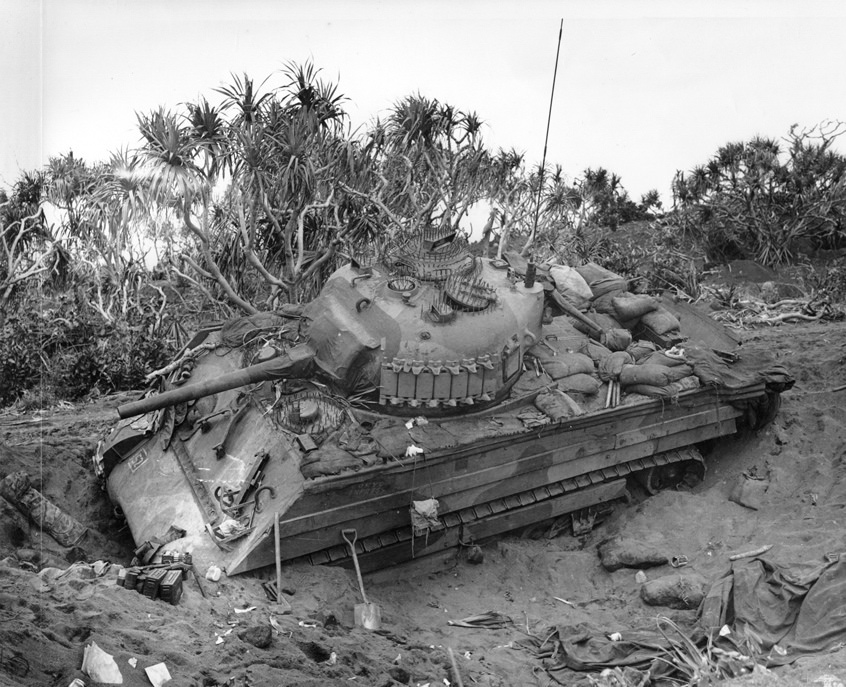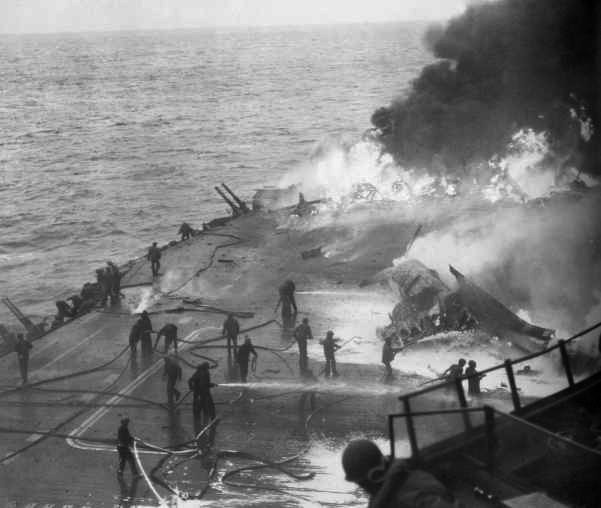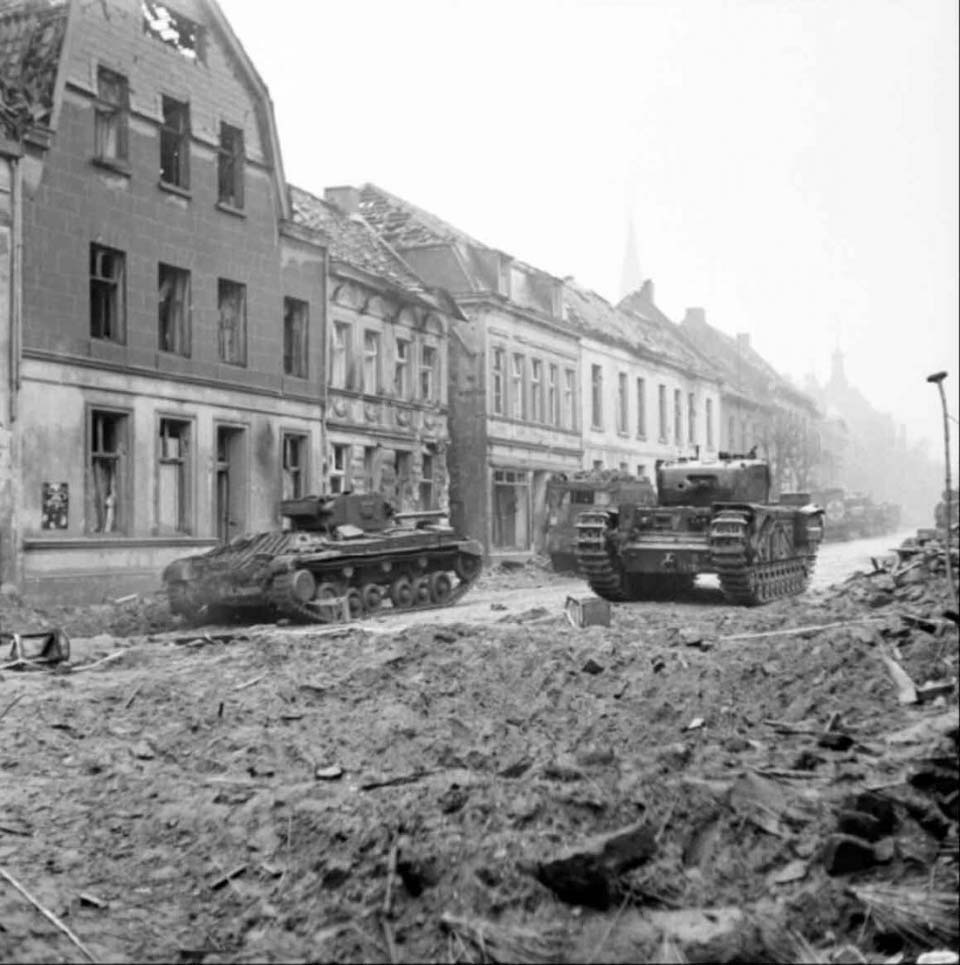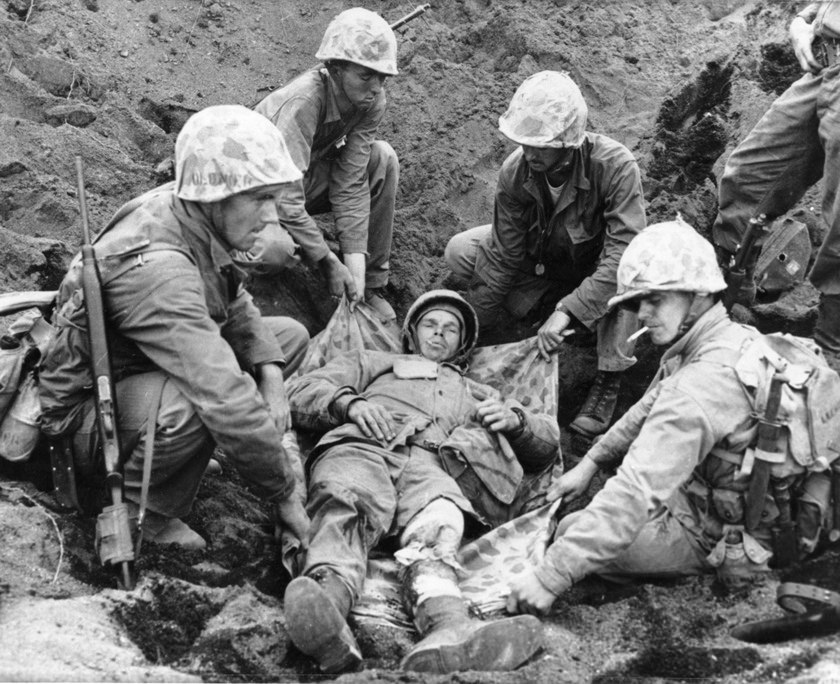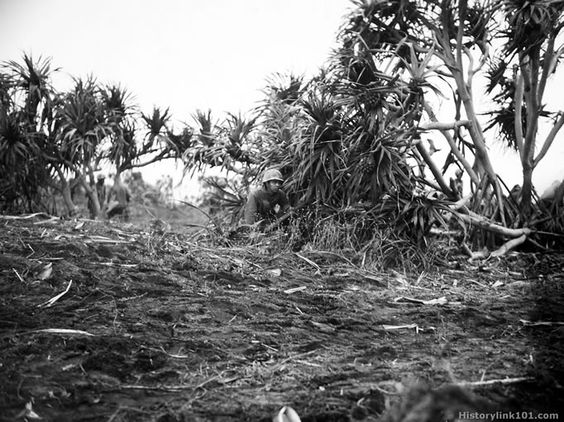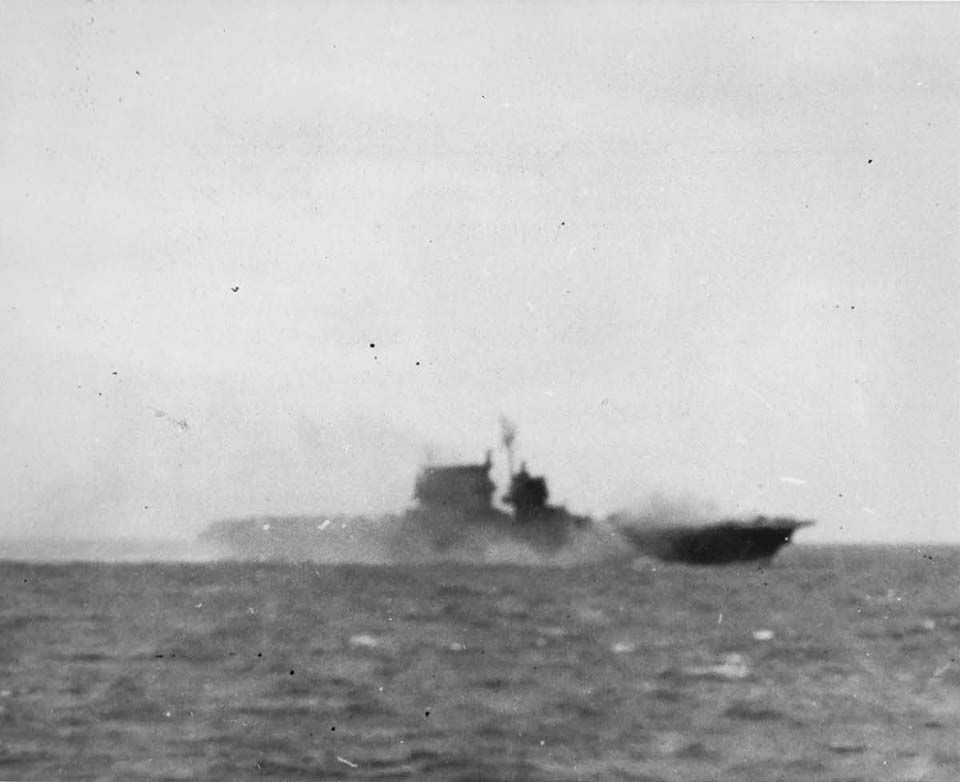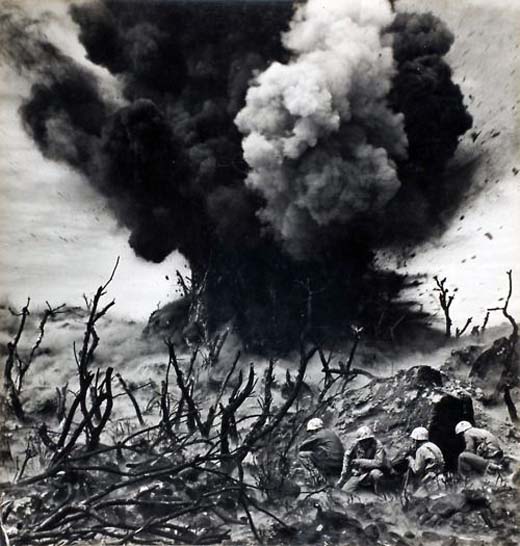Air Operations, CBI
BURMA- More than 100 10th Air Force fighter-bombers attack numerous targets throughout Japanese-occupied areas.
- 16 P-47s support Allied ground forces around Namhsan.
- 15 P-47s support Allied ground forces around Mongmit.
- 21 341st Medium Bomb Group B-25s and 12 14th Air Force P-51s attack Taiyuan.
- 2 B-25s and 12 P-40s attack Yoyang.
- Nearly 100 fighter-bombers attack numerous targets across southern and eastern China.
Air Operations, East Indies
- XIII Bomber Command B-24s attack the Kudat and Sandakan airfields on Borneo.
- V Bomber Command A-20s attack Jeselton, Borneo and the airfield there.
Air Operations, Europe
RAF BOMBER COMMANDDaylight Ops:
Minor Ops:
- 1 Halifax flies an RCM sortie.
- 362 Lancasters and 11 Mosquitos of Nos. 1, 6 and 8 Groups are sent to Duisburg. This is a successful area-bombing raid and much damage is caused. No other details are available. This is the last major Bomber Command raid on Duisburg.
- 7 Lancasters are lost and 3 more crash behind Allied lines in Europe.
- 349 aircraft including 288 Halifaxes, 36 Lancasters and 25 Mosquitos are sent to Worms. This is the first and only large Bomber Command raid on Worms. The raid is an area attack in which 1,116 tons of bombs are accurately dropped. A post-war survey estimated that 39 per cent of the town's built-up area was destroyed.
- 10 Halifaxes and 1 Lancaster are lost.
- 165 Lancasters and 12 Mosquitos of No. 5 Group again attempt to breach the Mittelland Canal near Gravenhorst. Visibility is clear and the attack is successful. Bomber Command claims that the canal was rendered '100 per cent unserviceable'.
- 9 Lancasters are lost and 4 crash in France and Holland. One of the Lancasters which crashes in Holland is piloted by Group Captain A. C. Evans-Evans, DFC, the station commander at Coningsby, flying a No. 83 Squadron aircraft. The Lancaster is shot down by a German fighter and crashes near Eindhoven. One of the gunners is the only survivor.
- 77 Mosquitos are sent to Berlin and 5 to Bremen, 28 aircraft are involved in Resistance operations, and there are 35 Mosquito patrols and 66 RCM sorties.
- There are no losses.
GERMANY:
- 1,204 8th Air Force B-17s and B-24s attack the rail station and a marshalling yard at Nurnberg.
- 7 of 600 VIII Fighter Command escorts are lost.
GERMANY:
- 348 9th Air Division bombers attack an oil depot, marshalling yards, bridges, communications centers, and targets of opportunity.
- 9th Air Force fighters and fighter-bombers attack an airdrome and rail lines.
- 1 B-26 is downed by flak, and 3 B-26s are downed in a by-now rare attack by Luftwaffe piston fighters.
ITALY:
- 12th Air Force B-25s attack bridges at three locations.
- XXII TAC P-47s attack communications targets and frontline battle areas.
- During the night, XXII TAC A-20s and A-26s attack light sources, an ammo dump, rail lines, and rail bridges in the Po River valley.
AUSTRIA:
- 15th Air Force B-17s and B-24s attack rail targets in and around Vienna as well as three marshalling yards.
- 15th Air Force heavy bombers attack a marshallng yard at Sopron.
- 15th Air Force heavy bombers attack shipyards at Fiume and Trieste.
Air Operations, Philippines
- 63 FEAF B-24s attack Japanese Army ground defenses and Japanese-held caves near Fort Stotsenburg at distances of only 1,000 yards from US Army ground troops.
- V Bomber Command B-25s and A-20s, and V Fighter Command P-38s attack Basco.
- P-47s attack Corregidor and road targets.
- P-40s support US 6th Army ground forces on Corregidor and at Marikina and San Mateo.
Air Operations, Volcano Islands
- Intense air and naval gunfire support precedes a major ground assault by V Marine Amphibious Corps units.
Between approximately 1645 and 2030 hours, an estimated 50 Japanese kamikaze aircraft arriving from the Tokyo area in several waves by way of Hachojo Jima in the northern Bonin Islands penetrate the US Navy combat air patrol and attack the US vessels arrayed off Iwo Jima. The USS Saratoga is struck by 3 kamikazes and a bomb shortly after 1700 hours, and by yet another bomb at about 1845 hours. Losses are 123 killed and missing, and 192 wounded, plus the destruction of 42 Night Carrier Air Group 53 aircraft in fires and water landings. As soon as her fires are under control, the venerable Saratoga departs for Eniwetok Atoll on her way to the United States. The escort carrier USS Lunga Point is slightly damaged by a kamikaze at about 1830 hours. At 1900 hours, 1 kamikaze strikes the escort carrier USS Bismarck Sea, setting off uncontrollable fires fed by fueled aircraft that result in the carrier’s loss following an enormous explosion. Of a complement of 943, 318 of her crewmen and airmen are lost. A cargo ship and an LST are also damaged by kamikazes. No lives are lost aboard the LST, but 17 are killed and 44 are wounded aboard the cargo ship. In the end, all of the attacking aircraft are destroyed, almost entirely by anti-aircraft fire. - VF(N)-53 F6Fs down 4 A6M Zeros at sea at 1650 hours and a VF-4 F6F downs a D4Y 'Judy' dive bomber near Chichi Jima at 1750 hours.
Burma
The 17th Indian and supporting tank units begin to break out of IV Corps' bridgehead at Myaungu and advance toward Meiktila. The Japanese know of the presence of British units in this area, but do no realize such strong forces are involved because the advance to IV Corps has been well disguised.
Farther north troops of the British XXXIII Corps step up their efforts to attract the main Japanese forces when the British 2nd Div crosses the Irrawaddy near Ngazun to link with 20th Indian Div who already have a bridgehead near there. Farther north still the British 36th Div take Myitson.
[Eastern Front
CENTRAL SECTORAfter days of heavy fighting the 8th Guards Army makes limited gains in the German defenses around Posen.
[Iwo Jima
In view of the heavy losses sustained and the little progress made, Gen Harry Schmidt orders the landing of the 3rd Marine Div, until now held in reserve. With powerful supporting fire by artillery, tanks and flame throwers, the Americans resume the attack to the south, toward Mount Suribachi, and to the north, with the island's second airport as objective. The advance is slow and costly and at the end of the day the American armor is down to 50% of its initial strength. But a combat group of the 5th Marines reaches the slopes of Mount Suribachi. During the night the Japanese launch numerous counterattacks and carry out several efforts to infiltrate.
The fleet carriers of TF 58 and the bombardment groups continue to give lavish support to the Marines. Although the Americans have complete air superiority, several Japanese suicide aircraft manage to dive on the US ships, sinking the escort carrier Bismarck Sea (CVE095) and damaging the aircraft carrier Saratoga (CV-3), the escort carrier Lunga Point (CVE-94), the net cargo ship Keokuk (AKN-4) and landing craft LST-477 and LST-809.
Damaged by a submarine torpedo is the destroyer Renshaw (DD-499). Damaged due to a collisions are the destroyer Williamson (DD-499), the attack cargo ship Yancey (AKA-93) and the landing craft LST-390.
[Pacific
- The US tank landing craft LCT-175 founders and sinks in heavy weather about 100 miles south of the Palau Islands.
- The US submarine Gato (SS-212) sinks the Japanese merchant cargo ship Tairiku Maru (2325t) in the Yellow Sea off the west coast of Korea.
- The Japanese merchant tanker Eiyo Maru (8673t), damaged by the US submarine Guavina (SS-362) the previous day, sinks off Cape Padaran, French Indochina.
- The Japanese cargo ship Fukusei Maru (1232t) sinks after running aground off Cape Shirazaki, Honshu.
Philippines
On Luzon the US XI Corps completes the occupation of the Bataan peninsula with the exception of a small pocket around Mount Natib. The operation has been easy and has cost at most 50 men killed or missing. Japanese losses are not much higher. Fighting on Corregidor continues, as does the battle in Manila. The 40th Division gets ready for mopping up operations in the Zambales Mountains, in the central western part of the island.
On Corregidor, the Japanese blow up the ammunition storage area near the Malinta Hill Tunnel, causing many casualties for the 3rd Battalion, 34th Infantry Regiment.
[Western Front
Finally with the capture of Goch by the 51st Div, British XXX Corps, Canadian 1st Army, Operation VERITABLE may be regarded as completed.
In the US 3rd Army sector there is a general advance. The 6th Arm Div, VIII Corps, advances east of the Our, the 80th Div and 4th Arm div, XII Corps, advance south of Mettendorf and into the positions of the Siegfried Line between the Our and Gay Rivers, including the capture of Roth, and the 10th Army Div, XX Corps, attacks in the direction of Kanzem and Wiltingen bridges, the final objectives of the offensive in the Saar-Moselle triangle.
The XV Corps, US 7th Army, keeps up pressure in preparation for the attack on Saarbrücken.
Goch falls to the attacks of 51st Div of the British XXX Corps.
Images from February 21, 1945
|
|
|
|
|
|
|
|
